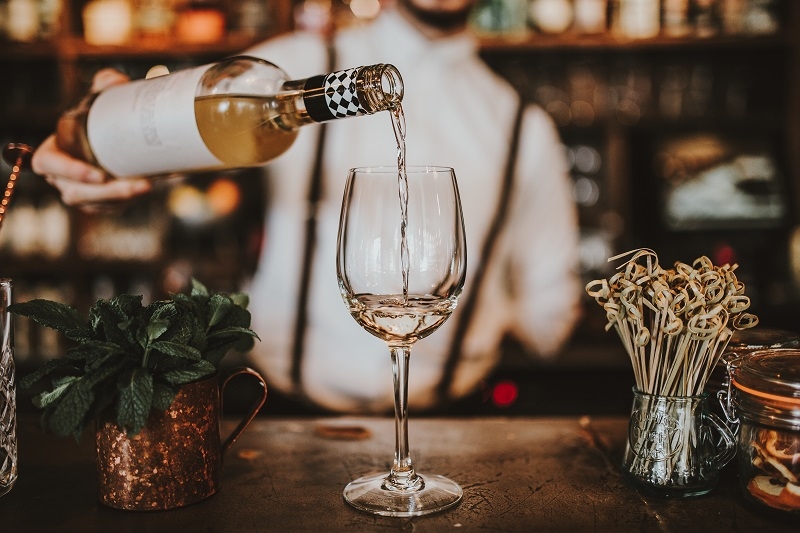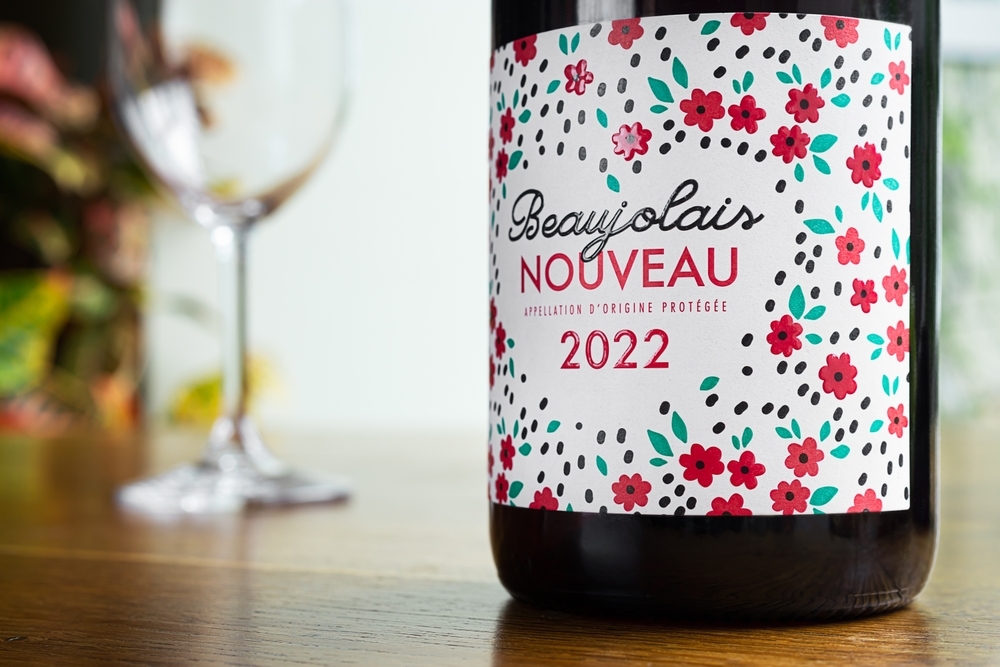Rioja Wine: A Luxury Among The Best Vineyards In Spain

Nestled in the heart of Spain, Rioja wine holds a special place in the world of viniculture. Its rich history, diverse flavors, and unparalleled quality have captivated wine enthusiasts for centuries. Lets explore the various aspects of Rioja Wine.
What is Rioja Wine?
Rioja wine is a renowned Spanish wine from the Rioja region, located in northern Spain. It is celebrated for its exceptional quality, distinct flavors, and remarkable aging potential. Made predominantly from Tempranillo grapes, Rioja wine comes in various styles ranging from young and fruity to rich and complex, catering to a wide range of palates.
Rioja Wine Origins
The history of Rioja wine dates back centuries, with evidence of winemaking in the region dating as far back as the Roman era. However, in the mid-19th century, Rioja wine began to gain international recognition. Today, Rioja is one of Spain's most prestigious wine regions, renowned for its commitment to tradition, innovation, and excellence in winemaking.
Learn More: Explore Bordeaux Wines: An All You Need To Know Guide
Different Types of Rioja Wines
Rioja Joven
Also known as "young" Rioja, these wines are aged for a minimal amount, typically less than a year. They are vibrant, fruity, and meant to be enjoyed while fresh and youthful.
Rioja Crianza
Aged for at least one year in oak barrels and another year in the bottle, Rioja Crianza wines offer more complexity and depth than their joven counterparts. They exhibit well-balanced flavors with a hint of oak influence.
Rioja Reserva
These wines undergo longer aging, spending at least three years in total, with a minimum of one year in oak barrels. Rioja Reserva wines boast enhanced structure, elegance, and aging potential, making them ideal for cellaring.
Rioja Gran Reserva
The pinnacle of Rioja winemaking, Gran Reserva wines are aged for at least two years in oak barrels and three years in the bottle. They are characterized by their exceptional complexity, maturity, and longevity, representing the finest expression of Rioja's terroir.
Grape Varieties Used in Rioja Wines

Tempranillo
This versatile grape thrives in Rioja's continental climate, producing wines with vibrant red fruit flavors, balanced acidity, and smooth tannins. Tempranillo can exhibit various characteristics, from youthful and fruity in joven wines to complex and nuanced in gran reserva wines.
Garnacha (Grenache)
Often blended with Tempranillo, Garnacha adds depth and warmth to Rioja wines. Known for its ripe berry flavors, soft tannins, and alcohol content, Garnacha contributes richness and sweetness to the blend, particularly in warmer vintages. It is commonly used in red and ros Rioja wines, offering complexity and structure.
Mazuelo (Carignan)
Mazuelo, or Carignan, is a traditional grape variety in Rioja. It is prized for its deep color, firm tannins, and high acidity. Mazuelo adds backbone and aging potential to the wine, enhancing its structure and longevity.
Graciano
Considered the "secret weapon" of Rioja winemakers, Graciano is prized for its intense color, aromatic complexity, and firm acidity. Graciano adds depth and character to Rioja wines. It imparts floral, herbal, and peppery notes, contributing to the wine's aromatic profile and aging potential.
Also Read: Learning About The Sauternes Wine: Bordeaux's Sweet Treasure
Production Process of Rioja Wines
Harvest
The winemaking process begins with carefully selecting and harvesting grapes, typically carried out by hand to ensure optimal ripeness and quality. In Rioja, harvesting often occurs in September or October, depending on the grape variety and vineyard location.
Sorting and Destemming
Upon arrival at the winery, the grapes undergo sorting to remove any damaged or unripe berries. They are then destemmed to separate the berries from the stems, preparing them for the next stage of winemaking.
Fermentation
The sorted grapes are gently crushed and transferred to fermentation tanks, where the conversion of sugars into alcohol takes place. Rioja winemakers may employ various fermentation techniques, including traditional open-top fermenters or modern stainless steel tanks, depending on the desired style of wine.
Aging
Rioja wines are aged to develop complexity and character after fermentation. The aging process typically occurs in oak barrels, which impart flavors of vanilla, spice, and toast to the wine. Depending on the category of Rioja being produced (joven, crianza, reserva, or gran reserva), wines may undergo varying lengths of aging in oak barrels and bottles before release.
Blending
Once the aging process is complete, the winemaker carefully selects and blends different batches of wine to achieve the desired style and flavor profile. Blending allows for consistency and balance in Rioja wines, ensuring that each bottle reflects the region's terroir and winemaking tradition.
Bottling
After blending, the wine is stabilized, filtered, and finally bottled, ready to be enjoyed by wine lovers around the world. Some Rioja wines may continue to evolve and improve with further bottle aging, offering a glimpse into the region's rich winemaking heritage.
Check This Out: Explore the Grandeur of Bordeaux and its Wine Regions
Serving Information
Rioja wines are best served slightly below room temperature to allow their flavors to express themselves fully. For young Rioja wines, a temperature of around 55-60F (12-15C) is ideal, while aged Rioja wines can be served slightly warmer, around 60-65F (15-18C). As for quantity, a standard serving size is around 5 ounces (150 ml) per glass, allowing the wine to aerate and develop its aromas.
How Does Rioja Taste?

The taste of Rioja wine varies depending on the style and aging process. Generally, Rioja wines are known for their red fruit flavors, such as cherry and strawberry, along with notes of vanilla, spice, and oak. Younger Rioja wines tend to be fresh and vibrant. In contrast, aged Rioja wines exhibit greater complexity with nuances of leather, tobacco, and earthiness, balanced by smooth tannins and a lingering finish.
Food Pairing with Rioja Wines
- Rioja Joven: Pair with tapas, cured meats, grilled vegetables, and seafood dishes like paella.
- Rioja Crianza: Complement with roasted lamb, grilled steak, mushroom risotto, and aged cheeses.
- Rioja Reserva: Serve alongside hearty stews, braised pork, game meats, and charcuterie boards.
- Rioja Gran Reserva: Indulge with slow-roasted beef, game birds, aged Manchego cheese, and dark chocolate desserts.
- Foie gras: The rich, creamy texture of foie gras is beautifully complemented by the sweet, honeyed notes of Sauternes wine.
Must Read: Taste the Magic: A Wine And Food Pairing Ultimate Guide
Conclusion
Rioja wine is more than a beverage. It is a centuries-old tradition of winemaking, passion, and dedication. Whether you're savoring a glass of youthful Rioja Joven or indulging in the luxurious complexity of a Rioja Gran Reserva, each sip offers a glimpse into the soul of Spain's vinicultural gem.
FAQs
Is Rioja wine only produced in Spain?
No, Rioja wine is exclusively produced in the northern part of Spain's Rioja region. While other regions in Spain produce their unique wines, Rioja stands out as one of the most prestigious and internationally recognized wine regions, known for its exceptional quality and diversity of styles.
What is the significance of the terms "Crianza," "Reserva," and "Gran Reserva" on Rioja wine labels?
The terms "Crianza," "Reserva," and "Gran Reserva" refer to the aging categories of Rioja wines and provide valuable information about the wine's style, quality, and aging potential. "Crianza" wines are aged for at least one year in oak barrels.
Can Rioja wine be aged further after purchase?
Yes, many Rioja wines have excellent aging potential and can continue to evolve and improve in the bottle over time. While joven (young) Rioja wines are meant to be enjoyed while still fresh and fruity, crianza, reserva, and gran reserva wines.
This content was created by AI
No keywords available
-1717753922-r.jpg)


